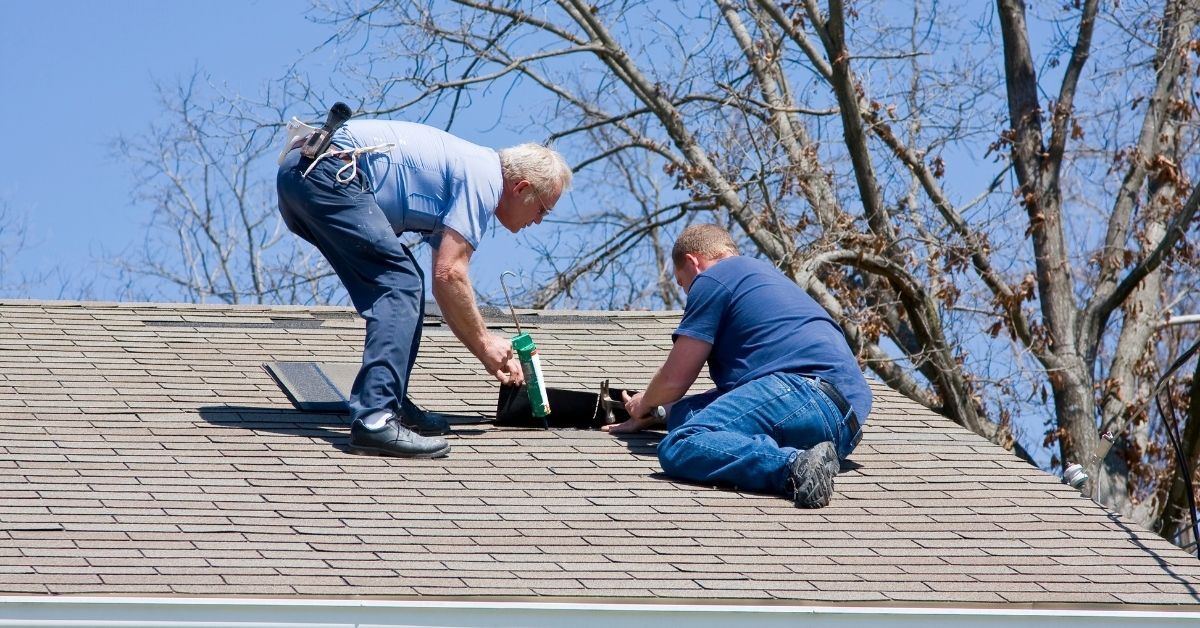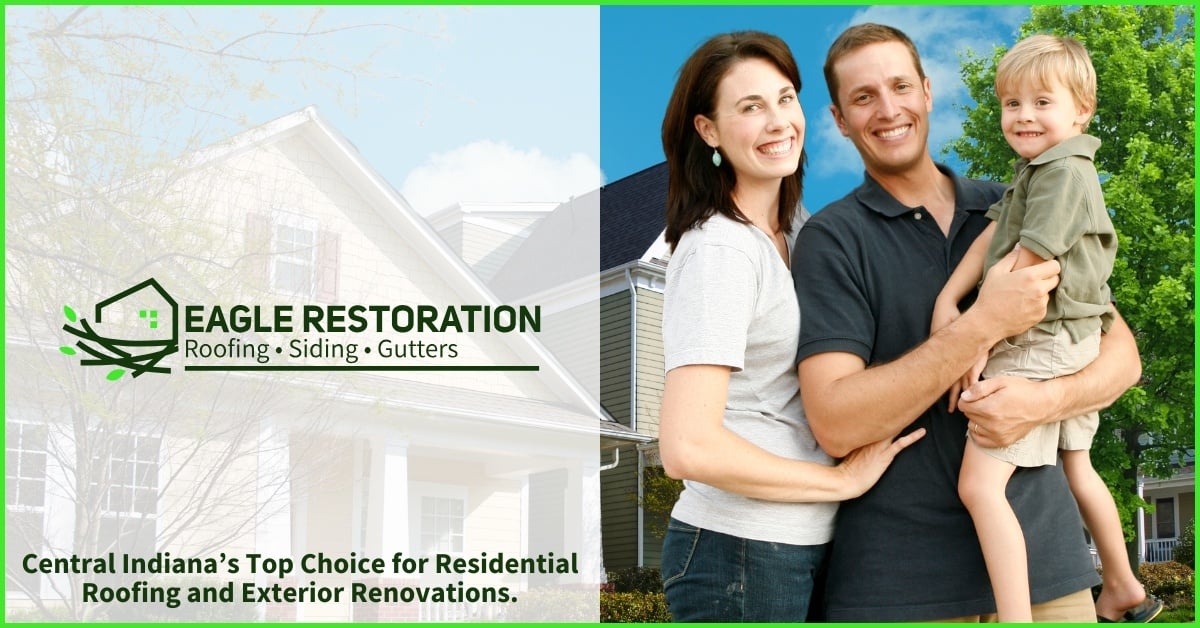7 min read
DIY Roof Repairs: What You Should and Shouldn't Try Yourself
By: Eagle Restoration Jun 20, 2025 10:30:19 AM

Roof repairs can be costly, and it’s tempting for homeowners to try handling minor issues on their own to save time and money. After all, if you’re comfortable with a hammer and ladder, why not patch up a few shingles or seal a leak?
The truth is, while some minor maintenance tasks can be safely done on your own, many roof repairs come with risks—not just to your home, but to your personal safety. At Eagle Restoration, we’ve seen firsthand how well-intentioned DIY roof work can lead to bigger problems when things go wrong.
This guide breaks down the types of roof repairs homeowners can reasonably tackle, and which ones are best left to licensed professionals.
Repairs You Can Try Yourself
Not every roofing issue demands professional intervention. With the right tools, knowledge, and safety precautions, there are a few maintenance and repair tasks that are generally safe for homeowners to handle.
1. Cleaning Out Your Gutters
One of the most overlooked causes of roof damage is clogged gutters. When debris like leaves, twigs, and shingle granules build up in your gutters, water can overflow or back up under the shingles, potentially causing leaks or even foundation problems over time.

Cleaning your gutters at least twice a year is a smart and manageable DIY task. Make sure to use a sturdy ladder with stabilizers, wear heavy-duty gloves, and always have someone nearby in case assistance is needed. Avoid working on the roof itself during this process.
2. Replacing a Single Shingle (With Caution)
If you notice one or two shingles have blown off and they’re in an easily accessible location—like a low-slope roof over a porch—you might be able to replace them yourself. Basic tools like roofing nails, a pry bar, and roofing cement can help with this kind of straightforward repair.

However, it’s important to check that no underlying damage has occurred. If you see signs of moisture beneath the missing shingle, or if the roof is steep or high off the ground, it’s time to call in a professional.
3. Sealing Small Cracks in Flashing
Metal flashing around chimneys, vents, and valleys is prone to cracking or separating over time. If you catch a small gap early, sealing it with roofing caulk or sealant can temporarily stop water from entering until a permanent repair is made.

Still, this should be considered a short-term fix. If the flashing is rusted, lifting, or missing entirely, a full replacement by a qualified roofer is the safer option.
4. Performing a Visual Inspection After a Storm
After severe weather, it’s smart to assess your roof for visible signs of damage. You can do this from the ground using binoculars or by checking from an upstairs window. Look for:
-
Missing or curled shingles
-
Debris buildup
-
Flashing that appears out of place
-
Sagging rooflines
-
Granules in your downspouts
Document anything unusual with photos, especially if you plan to file an insurance claim. But avoid climbing onto the roof to get a closer look—storm-damaged roofs are unstable and dangerous.
Repairs You Shouldn’t Attempt on Your Own
Even if you’re confident in your DIY skills, there are some repairs that carry too much risk or require specific training and materials. Attempting these fixes yourself can result in further damage, voided warranties, or serious injury.
1. Replacing Multiple Shingles or Entire Sections of Roofing
What starts as a minor leak could be a sign of deeper structural issues. Replacing several shingles—especially if they’re in different areas of the roof—requires expertise in waterproofing, underlayment placement, and shingle alignment. Small mistakes can lead to long-term leaks and rot beneath the surface.
A professional roofer understands how to match new shingles to existing materials and restore the integrity of the roof system, protecting your home for years to come.
2. Repairing or Replacing Roof Flashing
Flashing installation is more complex than it may appear. It requires precision cuts, appropriate layering with shingles, and proper sealing techniques to ensure long-term waterproofing. Improperly installed flashing is one of the top causes of roof leaks.

Attempting to repair or replace flashing without experience can result in water entering your attic or walls, leading to mold, insulation damage, and structural rot.
3. Working on Steep or High Roofs
Even experienced contractors use safety harnesses and fall protection when working on roofs. For the average homeowner, climbing a steep roof with tools in hand poses a significant safety risk. Falls from roofs and ladders are among the leading causes of home repair injuries.

If you can’t safely walk the roof with proper footwear, safety gear, and fall protection systems in place, it’s not a task you should be attempting.
4. Handling Storm Damage or Suspected Leaks
It’s understandable to want to act quickly after a storm, especially if water is entering your home. But DIY attempts to patch over storm damage can actually interfere with the insurance claims process. If the damage is not properly documented or repairs are made without professional assessment, your insurance company may deny part of your claim.
Instead, contact a local restoration company that can provide a full inspection, help you document damage for your insurer, and guide you through the repair process.
Why DIY Roofing Isn’t Always the Best Option
There’s no shame in wanting to save money or be hands-on with home repairs. But roofing is a system—and like any system, it’s interconnected. What might look like a simple issue often ties into larger concerns you can’t see from the surface.
Here’s why even well-meaning DIY efforts can backfire:
-
Hidden Damage: Roofing materials can hide signs of moisture damage or mold, which require a trained eye to detect.
-
Incorrect Materials or Installation: Using the wrong nail type, underlayment, or adhesive can void warranties or lead to structural problems.
-
Compromised Insurance Claims: Repairs made by unlicensed individuals may not be covered by your insurance provider.
-
Safety Hazards: Beyond falling, DIY roof work can also lead to electrical accidents if you're near power lines or attic wiring.
When in Doubt, Call Eagle Restoration
At Eagle Restoration, we believe homeowners deserve peace of mind. We offer free roof inspections to help you understand what’s really going on with your roof—and we’ll tell you honestly whether it’s something you can handle or something we should take care of for you.
Our experienced team serves homeowners throughout central Indiana, providing trusted roof repair, full replacements, and storm damage restoration. If you’re dealing with a leak, missing shingles, or damage after a storm, don’t guess—call the experts who can help you protect your home and your investment.

Schedule your free inspection today and get clear, professional guidance—no pressure, just support.
Eagle Restoration: Central Indiana’s trusted name in roofing and storm recovery.
Vinyl vs. Fiber Cement: Which Siding Material Is Best for Your Home in Central Indiana?
Choosing the right siding for your home is a big decision. Your siding not only defines the look of...
How Indiana’s Humid Summers Can Affect Your Roof
What Every Homeowner Should Know to Protect Their Investment